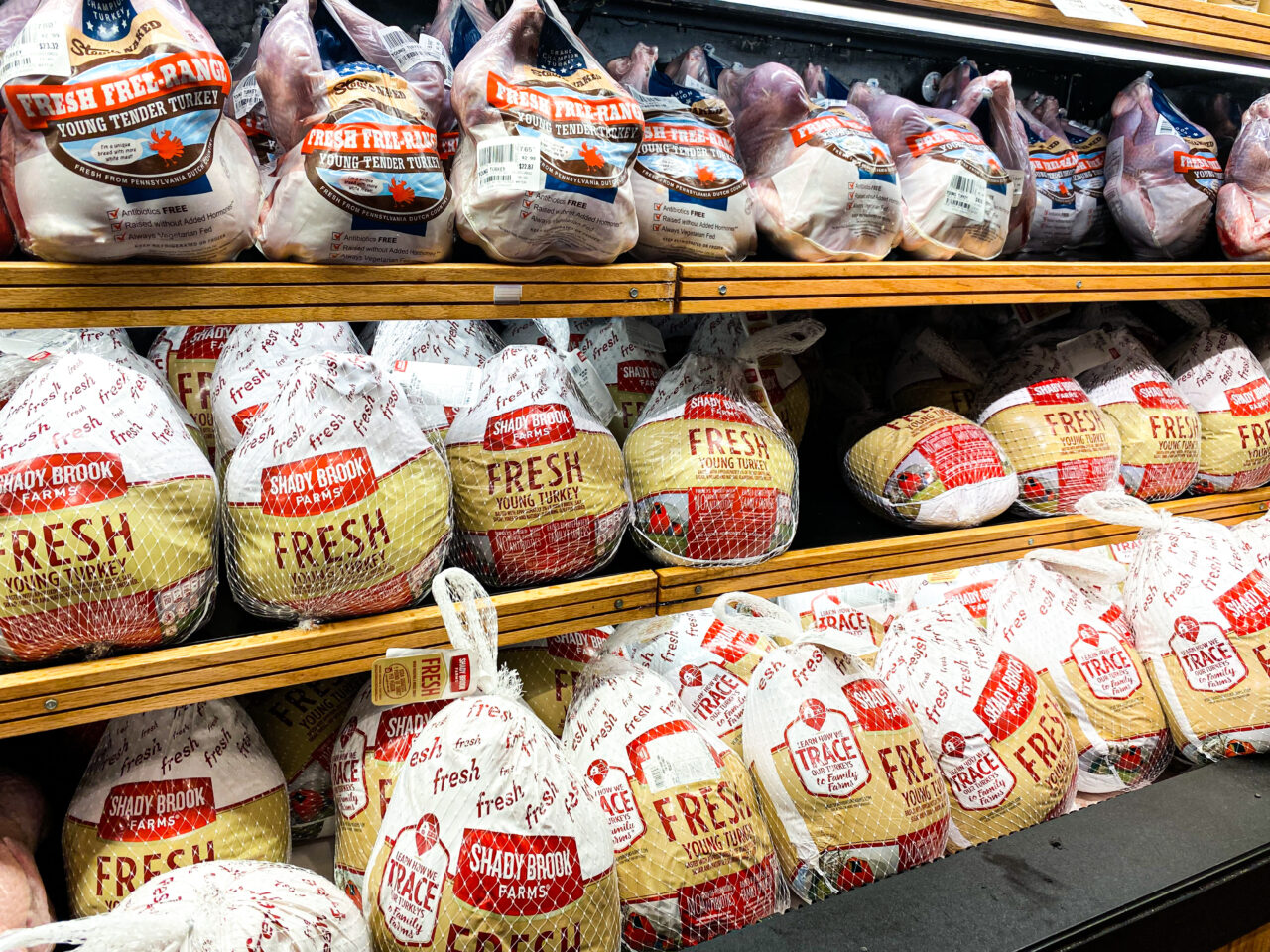How Thanksgiving Became Turkey Day, According to Animal Studies Professor Elan Abrell

Forget the Christmas ham and the Fourth of July hot dog: there’s no ordinary-meal-turned-American-holiday-icon quite like the Thanksgiving turkey. In addition to adorning parade floats and being rendered via crayons and children’s splayed hands, turkey is expected to be at the center of the table for 85 percent of Thanksgiving celebrations this year.
But turkey wasn’t the main course when the Wampanoags and Pilgrims convened for their legendary feast in 1621. In fact, it’s unclear whether it was on the menu at all: many experts believe fowl like duck, goose, or passenger pigeons were likelier complements to a feast that featured venison, shellfish, and corn. So, if not for a hazy origin story, how did eating turkey become synonymous with the last Thursday in November?
“There’s a unique trajectory to how turkey became associated with Thanksgiving, because it was a uniquely North American food,” said Elan Abrell, Assistant Professor of the Practice in Environmental Studies, who teaches the class Eating Others: Histories and Cultures of Animal Edibility.
In truth, European elites developed a taste for turkey in the 1500s, after Spanish explorers brought back turkeys that had been domesticated by indigenous peoples in Mexico and Central America. But the heavily indebted English farmers probably didn’t have the same palate when they arrived in Massachusetts and stumbled upon an abundance of wild turkeys, a fraction of the 10 million or so trotting around the continent in the 17th century. And while its inclusion at the first Thanksgiving remains an open question, turkey’s inherent culinary advantages quickly became clear to colonists: turkeys were plentiful, easy to hunt, and, as game birds go, capable of feeding more people than chicken, Abrell said.
After George Washington proclaimed a one-off Thanksgiving celebration in 1789, the wild turkeys of America became an emerging nation’s unofficial, tail-feathered symbol. “To some extent, there was an intentional effort to get people to start thinking of turkey as American cuisine and encourage people to eat North American food to distinguish a developing culture from England, where most people wouldn’t be eating turkey at the time,” Abrell said. (Abrell mentions an apocryphal quote attributed to Alexander Hamilton: “No citizen of the US shall refrain from turkey on Thanksgiving Day.”) And with westward expansion, settlers carried homegrown holiday customs across the country.
“We could be living in an alternate reality where chicken pie is at the center of the Thanksgiving meal, but that combination of practical factors and some big turkey fans pushing the idea in popular culture made it a more prominent thing to serve,” Abrell said.
Before and after Abraham Lincoln made Thanksgiving a national holiday in 1863, an expanding American population increasingly moved from farms to cities, and turkeys—which American farmers had already been engineering into domesticated breeds like the Bronze turkey—were swept up in an industrializing agriculture sector. Birds were selectively bred to grow faster, cheaper, and bigger; by the mid-20th century, massive amounts of breast tissue made commercial turkeys vastly different from their wild counterparts (which, after being nearly eradicated in New England in the 19th century, have since made a comeback).
“A lot of people who eat turkey now probably would not like wild turkey as much,” Abrell said. “It’s a very different eating experience to the industrialized turkey—tougher, gamier. As the industry expanded, in a way it also replaced the idea of what a turkey was.”
Since the mid-20th century, Abrell said, turkey has been inextricable from Thanksgiving. Norman Rockwell painted one into the middle of Freedom From Want; American presidents “pardoned” them. Now, Americans eat 46 million turkeys each Thanksgiving Day, according to the US Department of Agriculture; turkeys are perennial loss leaders for supermarkets, Abrell said. And despite expected price spikes from a combination of inflation, supply chain issues, and avian influenza, he expects the tradition to endure this year.
“Or,” Abrell said, “you could do the more humane thing and just eat Tofurky.”

